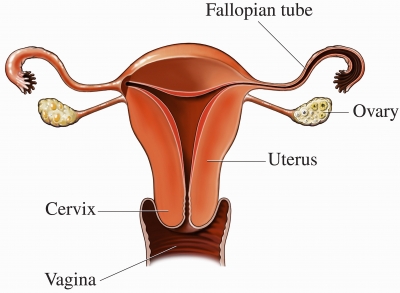
The ovaries form part of the female reproductive system. Each woman has two ovaries. They are oval in shape, about four centimetres long and lie on either side of the womb (uterus) against the wall of the pelvis in a region known as the ovarian fossa. They are held in place by ligaments attached to the womb but are not directly attached to the rest of the female reproductive tract, e.g. the fallopian tubes.
The major hormones secreted by the ovaries are oestrogen and progesterone, both important hormones in the menstrual cycle. Oestrogen production dominates in the first half of the menstrual cycle before ovulation, and progesterone production dominates during the second half of the menstrual cycle when the corpus luteum has formed. Both hormones are important in preparing the lining of the womb for pregnancy and the implantation of a fertilised egg, or embryo.
If conception occurs during any one menstrual cycle, the corpus luteum does not lose its ability to function and continues to secrete oestrogen and progesterone, allowing the embryo to implant in the lining of the womb and form a placenta. At this point, development of the foetus begins.
Picture Credit : Google

